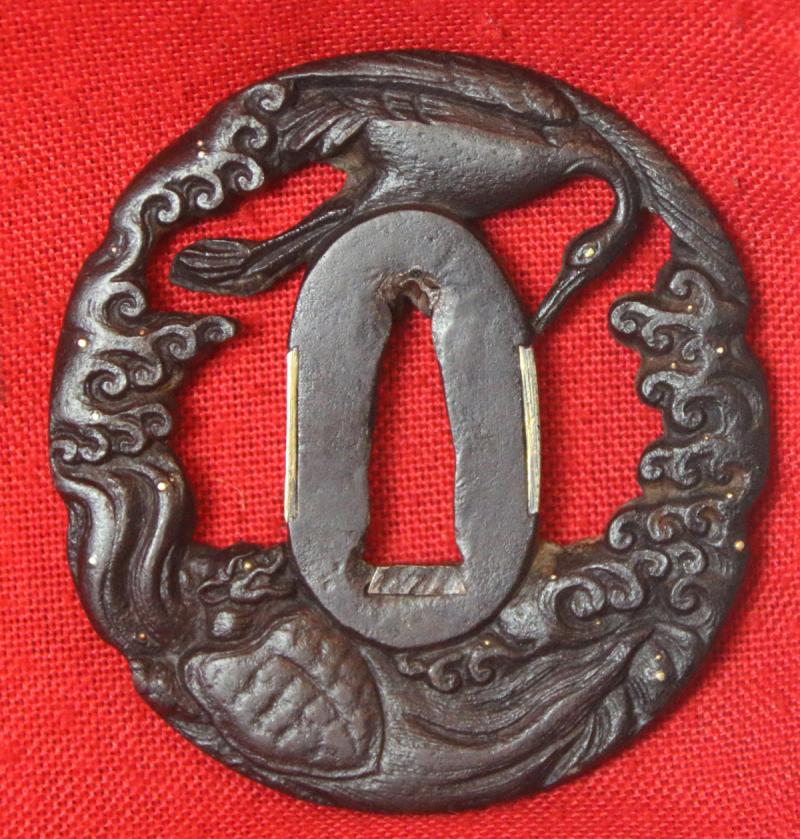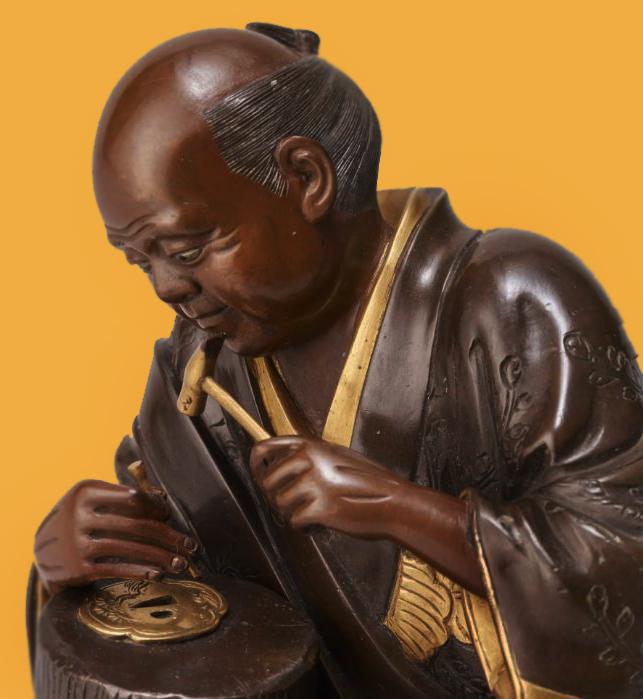A Beautiful Omori School Tsuba Turbulant Sea With Crashing Waves and A Crane Swooping Over Turtle Below.. Edo Period
The crane and the turtle have a significant position in Japanese folk lore and tradition, as both symbolically represent longevity in Japanese art.
The shibuichi tsuba of marugata shape, with a kozuka and kogai hitsu-ana, the nakago-ana with some suaka sekigane, finely worked takabori and takazogan to depict breaking waves carved in the typical manner of the Omori school with inlaid gold spray drops. Sekigane. Late 18th century, Edo period (1615-1868)
Tsuba were made by whole dynasties of craftsmen whose only craft was making tsuba. They were usually lavishly decorated. In addition to being collectors items, they were often used as heirlooms, passed from one generation to the next. Japanese families with samurai roots sometimes have their family crest (mon) crafted onto a tsuba. Tsuba can be found in a variety of metals and alloys, including iron, steel, brass, copper and shakudo. In a duel, two participants may lock their katana together at the point of the tsuba and push, trying to gain a better position from which to strike the other down. This is known as tsubazeriai pushing tsuba against each other.
A closely related shibuichi tsuba with waves {omitting the crane and turtle} by Omori Teruhide is in the Museum of Fine Arts, Boston, accession number 11.5454.
Koryūsai Isoda, woodblock print, of a crane flying over crashing waves.
64mm
Code: 25456
625.00 GBP



